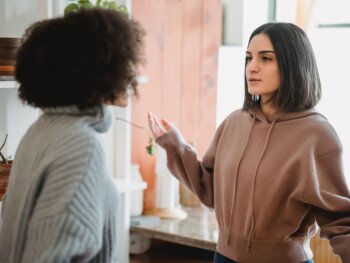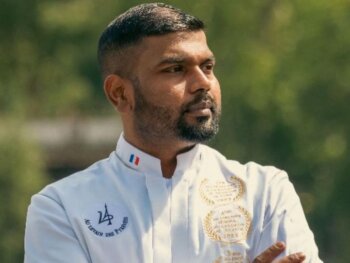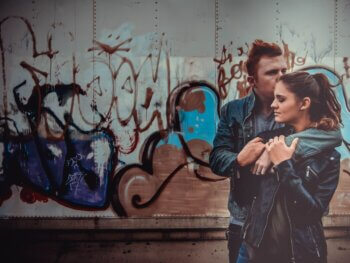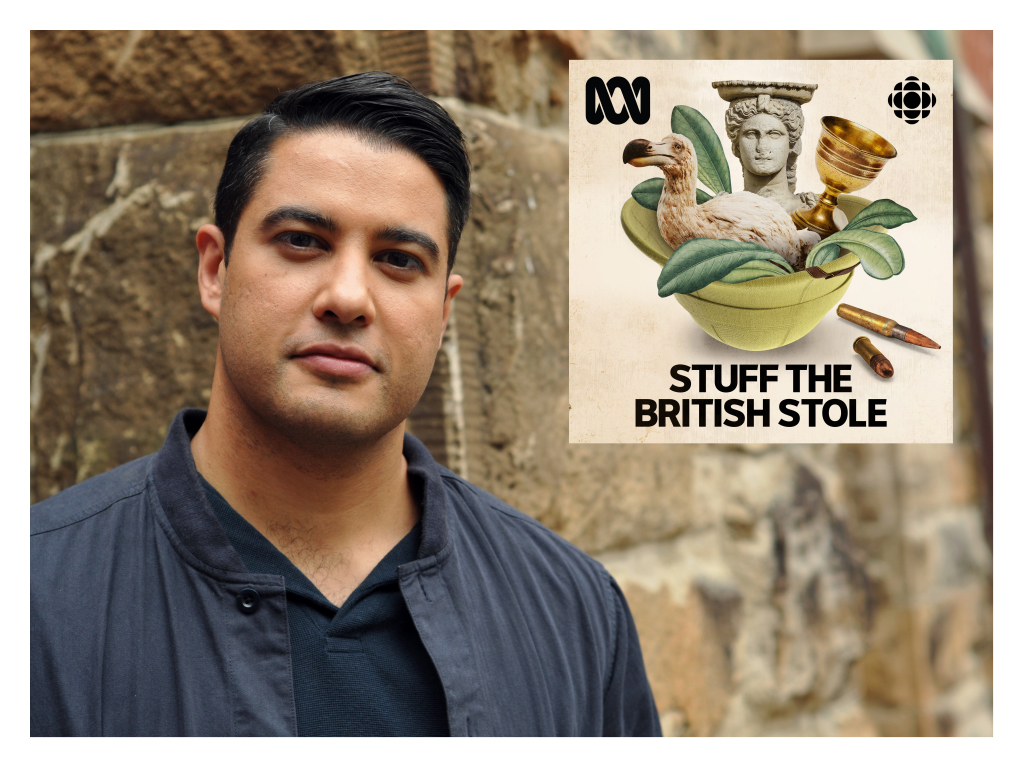
We Were Robbed: Marc Fennell of “Stuff The British Stole” Dives Into The World Of Colonial Plundering
Lifestyle Nov 12, 2021
International award-winning journalist Marc Fennell hosts his podcast “Stuff The British Stole”, a globe-trotting journey where he shares dark stories behind artifacts that were stolen during the colonial era. Direct from Australia, we talk about season 2 which is out now, Tipu Sultan’s tiger and his thoughts on the current social movement calling out museums for taking credit for stolen history.
The first episode was done on a whim. It was in December 2019 when in London for three days, Marc decided to bang out a few interviews. And it was just like that, Marc’s podcast “Stuff The British Stole” was born. The first season launched in November 2020 with the second season ready available with episodes being released weekly.
Hina P. Ansari: Congratulations on this podcast. The title is fantastic. It just grabs your attention immediately. So tell me Marc, how did this show come about?
Marc Fennell: I was only in London for three days. And I met this lovely historian, you can hear about it in the very first episode “A Tiger And A Scream” where she says, “You have to go see Tipu Sultan’s tiger before you leave.” It was absolutely bizarre. [The tiger] sits at the Victoria & Albert Museum. I remember getting to the museum, freezing, and it was empty. Everyone was Christmas shopping, not visiting this. I was staring at this semi-life size tiger mauling to death a British solider. And it turns out there is a crank on the side and if you rotate the crank, it makes a sound. You can hear the guy scream and apparently his arms flutter on the ground. It was real strange. I was like, “Why on Earth does this exist?”
That was the catalyst. When you start pulling the threads on these objects in the museum, you actually find the story. I saw it as the story of the people left in the wake of the British Empire.

HPA: There are two schools of thought when it comes to the British Empire, first that it was a horrendous era. And secondly that due to the colonization, there are some positive aspects to it as well.
MF: The reality is at the moment we seem to only able to have one of those conversations. They don’t balance each other out. They don’t cancel each other out. They simply coexist. Yes, we wouldn’t be here without it, in many ways. Yes, absolutely horrendous unforgivable things were done in the name of the British Empire, no question. And no one can or should ever minimize that. But they coexist. And it struck me that these little threads on these objects at the museum are really doing a lot of heavy lifting. They are telling the story of history. And they are usually quite polite. And it struck me that if you sort of just start scratching on the history of some of these objects, you can tell it’s a small doorway into a very big world. You can tell the story of us, people left in the wake of the British Empire, by examining these objects.
HPA: Was there anything that surprised you during your chats?
MF: As you start talking to people who are descendants of objects or descendants of communities, what I didn’t expect for me or for them is how emotional it would be. Because these objects are lightning rods for so much of what has been happening. Land, culture, all of this stuff starts to tumble out if you start looking into it. It’s the number one history podcast in India, Canada, Australia, and New Zealand at the moment. I guess, I thought my weird theories about ephemeral objects and this would be a niche project. I didn’t think it would have that much impact.
The other thing I’m surprised about is that we set up an email address in season one where people could email us. If you had an interesting object around the world, let us know. All of Season 2 is made from listeners’ suggestions. In fact, our listeners are one of characters in the series. But I didn’t expect when we made those first couple of episodes, [that we would be] instantly inundated by hundreds of emails from all around the world. Not just from Australia and Canada, but from New Zealand, India and Pakistan.
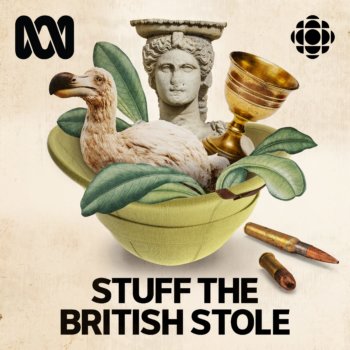
HPA: This is a co-production of Australian Broadcast Corporation (ABC) and Canadian Broadcasting Corporation (CBC).
MF: The fact that ABC and CBC partnered on this season, to me is a running joke. But it’s very a dark joke. I do think that if you talk about the two biggest things that the British stole it’s Canada and Australia: literal land masses that were stolen. So, you can’t get bigger than Canada and Australia in terms of things that were taken by the British. And I think that it sort of fits that the two public broadcasters would be aligned on this kind of storytelling.
We’re certainly not the first people to do it. But I do think of the show as tackling something: a desire to reexamine history and acknowledging the nuance of what happened in the past. When you get into some of the histories of these objects, they are often really nuanced, and it doesn’t have clear cut good guys or bad guys. It is actually really complex. I think podcast and audio storytelling is really good for that because you can step through it methodically and kind of acknowledge the complexity of it.
HPA: What do you feel your audience wants in “Stuff The British Stole”?
I think the audience wants complexity. I think they don’t want a simple story. I think they want to be to walk through the sort of the good and the bad and kind of stand in the mess of history. And go, “Okay, wow. I wouldn’t be here without this. What does this mean for me? Where do I sit in all of this?” That’s been a really common thread and sort of the feedback we have received from people. They start to investigate their own history, their own family, their own culture, and how connected and not connected they are.
One of the reasons why the series is such a big part of my life is because I joke in the very first episode, I don’t have a lot of connections to my family. Certainly not my South Asian culture. I don’t know that much about it. It’s only when I start looking into projects like this that I think more about it. More than anything, I’m really envious of people that have a deep connection to their culture because I don’t. We are talking to people who feel it so immensely and so deeply. They are the last chapter in a story that has gone for eons, and I’m jealous, honestly. I’m absolutely jealous of how they’ve been and how they view themselves as a small part of something much larger. I think some of that is something incredibly moving about people like that. But I sort of just want to talk to them.
HPA: Has doing this show motivated you to take a closer look at your own lineage?
MF: Yeah, it has. A lot of it has made me have conversations with my parents about this stuff. My mom is my Indian side. And when I was making this podcast I called her up a few times asking “Do you know where my grandmother grew up? And what was the history?” It was sort of forgotten and lost. Usually, it falls to one or two family members who are a bit obsessive to kind of dig into it. I started doing that for both sides of my family. It was like, “where are we actually from and what actually happened?” And there is sort of a moment in the very first episode of the series where I realized, “Oh my God, I’m actually connected to this thing.” And it’s a genuine surprise. I genuinely didn’t know. And it was only through interviewing one of the guests, they were like anybody who has a connection from this window of time, is part of this. And I did the math, and was like, my family is from there. I’m like, “No way!”. There are moments of discovery.
HPA: How do you balance the audio versus the visual? I’m asking because when it comes to artifacts, you would think one wants to see them. How did you incorporate such texture in your audio storytelling?
MF: It’s funny. I work in both. I work in both, television and podcast. At various different points in my career, working on sort of different podcasts people would say to me, “Oh, that should be on TV because you really want to see it.” The beautiful thing about podcasting and audio storytelling is that you have to leverage the audience’s imagination. You have to make the audience an active participant in your story. You do that by crafting an image in the head, either with words or with sound. Don’t get me wrong, I love filmmaking. But I like audio, because the audience has to start to build an image in their mind, and you can control how many details you give them. Because their brain and heart will fill out the image in their mind. There’s a lot of narrative opportunities that come with that. You can paint a certain kind of picture. You also can remove a certain aspect of it, that will allow us to build a certain kind of image. And then, when you add in that one piece of information, you can completely change the picture in their head. You are leveraging their imagination to help tell the story. A good example of that is at the very beginning of the very first episode that I describe a man being mauled to death by a tiger.
HPA: You launched your first season in November 2019. But the world shut down in 2020. How did you manage your interviews?
MF: It was a gigantic pain (laughs). I traveled to the usual places but then after that the world shut down. And up until literally yesterday, Australia prohibited leaving the country pretty much.
So literally, I haven’t been able to go anywhere. Because I like having interviews being so active where we are doing things and sort of looking at things. We would get a microphone, sound recorders, and walk around and have scripts. I would walk around [my office] and I would have my eyes closed and say something like, “What am I looking at? Fantastic. Brilliant.” And then, you get their audio and your audio, lay it on top of each other. It doesn’t matter where I am. But it matters where the listener is.
It is really technically challenging. It’s not great audio reception on top of the Acropolis for example. A lot of people don’t know that. I remember talking to a lovely gentleman walking on some ruins in Beijing and just hoping to God that it was going to make sense. And I was literally walking around with a handheld microphone in my city going, “If you look over here, we have this. And look over here, we have this.” There are advantages to it, because they know you are not there, they describe things a lot clearer. If you are with somebody, they say to just look at it. They know that we need it in audio and they are very helpful. They actually have to articulate what you are supposed to be looking at. There are some advantages to it. But it has to feel like an adventure. It can’t just be a series of sort of sit down, Zoom interviews. I think we are all sick of Zoom because of the last two years, frankly. It was really important that the show, even if I couldn’t be there, it still sounded like you were going on an adventure. You were going to a place that you had never been before.
The running joke is that this show is Indiana Jones in reverse. Indiana Jones goes around the world and says it belongs to a museum. In our version, it should be someplace else. It has to be me talking to other people. It has to be me listening to other people tell their story rather than me describing the history to people.
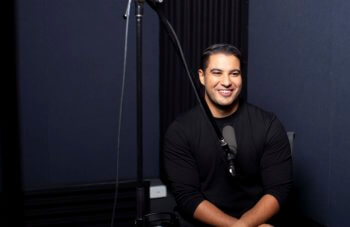
HPA: You revisit historical events by pulling back the curtains. We know that the era of the British Empire has been romanticized a great deal especially through films. How did you use your journalistic IQ when telling these stories.
MF: It’s not about rewriting history. It’s about finding who was left out of the first draft. Who was forgotten? Let’s go talk to those people. Let’s go see how their families were sorted. Because if things were true or weren’t true, we will be honest about it. You have to treat historical times with the same journalistic rigor that you would treat a modern time, right? But at the end of the day, history was written by the victors, the colonizers as they were. Whose story didn’t get told? Let’s make sure that their voice gets heard. That is all it is.
When I explain that, I hope that I get the spirit behind it. It is about truth-telling. It is being honest with the past and telling a more complete picture than what was taught to us in schools.
HPA: One of the byproducts from the BLM movement last summer is on Twitter specifically, where you see people actively calling out museums for having stolen artifacts. Whenever a museum posts a tweet, all the comments will be “yeah, but you stole that.” “Give that back”. Tell me about that because I feel that is getting some traction. You see this kind of awareness percolating in the social space.
MF: Between when I sort of started working on this project, in December 2019 and when the first episode came out in November 2020, the BLM movement exploded. Certainly people were fighting for civil rights. Something else also happened in that window. Statues are being pulled down in the UK and around the US and other places. That culture has shifted massively. When it comes to people calling out museums or wanting to pull down statutes of people, my attitude is that it is a very case-by-case approach. I don’t think there’s one position we can take on all objects. I think we have to go by artifact by artifact, object by object, history by history, and tell that story.
There’s a great desire to call out museums now. And I have to admit, I’m hyper aware of it in the industry. My personal contribution to that as a culture movement is just to try and be as honest and rigorous with telling the truth of these objects so that whatever conversation we have next is rooted in facts and rooted in honesty.
HPA: Do you see yourself as a journalist or an activist? Or both?
MF: I’m a journalist, not an activist. I acknowledge the hard work that activists have done, but that’s not the job I play within the history and not what I’ve chosen to play. My job is I want to tell [the story] as honest as possible and find as many facts as I can and complete the picture of the history of the colonial powers. I want to be truthful as I can be with those objects.
I am trying to present you with something to give you a clear picture of the past. And then, it is sort of up to us and it’s generally a question I am asking rather than an answer I’m proposing. In the fifth episode, the last episode of last season (“Shots Fired”), most people say it was an object that was taken from the very first moment that Lieutenant Cook arrived in Australia. His men shot somebody. And they stole their spears and their shields.
Spears are actually important because the spears were what they used for fishing. They literally stole their livelihood. Their ability to feed their community was gone when they took those spears. And afterwards, not at all claiming credit for this, but I do think after that, that’s where I was told one institution in Cambridge gave back the spears that they have. I’m certainly not claiming credit for that. Because there was lots of work done for many years to do that. It does tell me that museums, universities, galleries are listening. Most people that go to work at the university, museums, and galleries, they are good people. They care about knowledge and history. They are not bastards. They are not in it for the money. And most of them are interested in the truth, right?
But some of the institutions themselves are really hamstrung. The British Museum is a really complicated place because the collection there is literally protected by the British Museum Act. Even if they wanted to, they couldn’t return them. They couldn’t legally give things back. They can lend objects if they want. And then a lot of countries, rightly so, say “Don’t lend me something and then ask me to pay for the insurance on something that your people stole”, which is fair enough. They are very limited on what they can do with some of their objects.
You can catch both seasons of “Stuff The British Stole” where you listen to your favourite podcasts as well as on cbc.ca.
Main Image Photo Credit: www.cbc.ca
Hina P. Ansari
Author
Hina P. Ansari is a graduate from The University of Western Ontario (London, Ontario). Since then she has carved a successful career in Canada's national fashion-publishing world as the Entertainment/Photo Editor at FLARE Magazine, Canada's national fashion magazine. She was the first South Asian in...









































































































